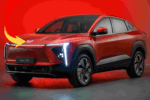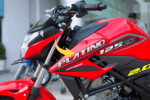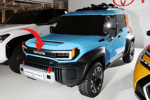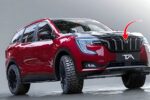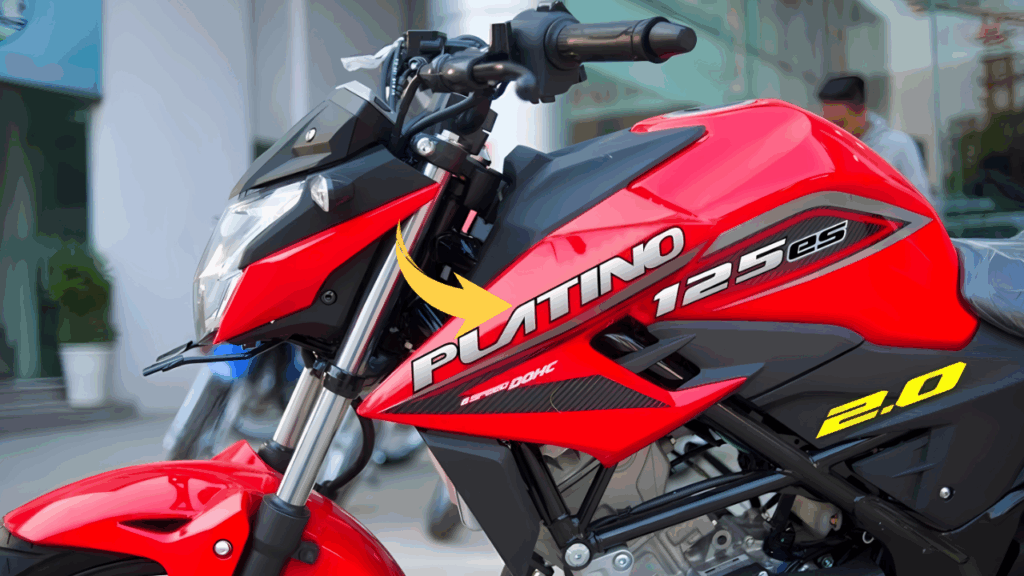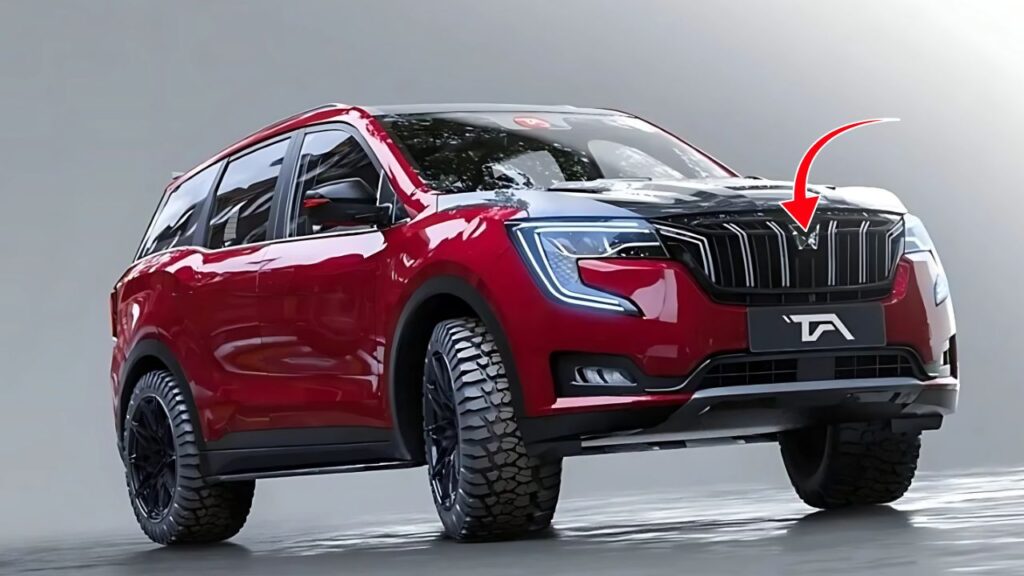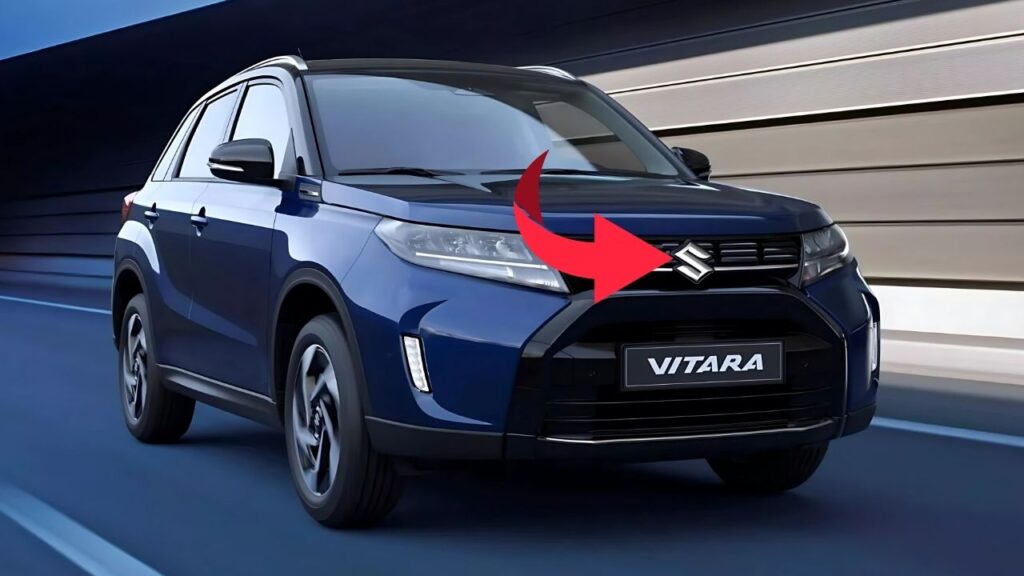Skyride BMV X6: In the diverse and rapidly evolving landscape of India’s premium motorcycle market, newcomers face formidable challenges establishing credibility and market presence against established domestic and international brands.
The Skyride BMV X6 represents one of the more intriguing recent entrants in this competitive space – a machine that combines distinctly Indian market awareness with design and engineering approaches that draw inspiration from international standards.
Neither a purely indigenous development nor simply an imported concept, the X6 illustrates the increasingly sophisticated approach of emerging Indian manufacturers as they seek to carve out space in segments once dominated exclusively by global brands.
Table of Contents
Skyride BMV X6: Origins and Strategic Context
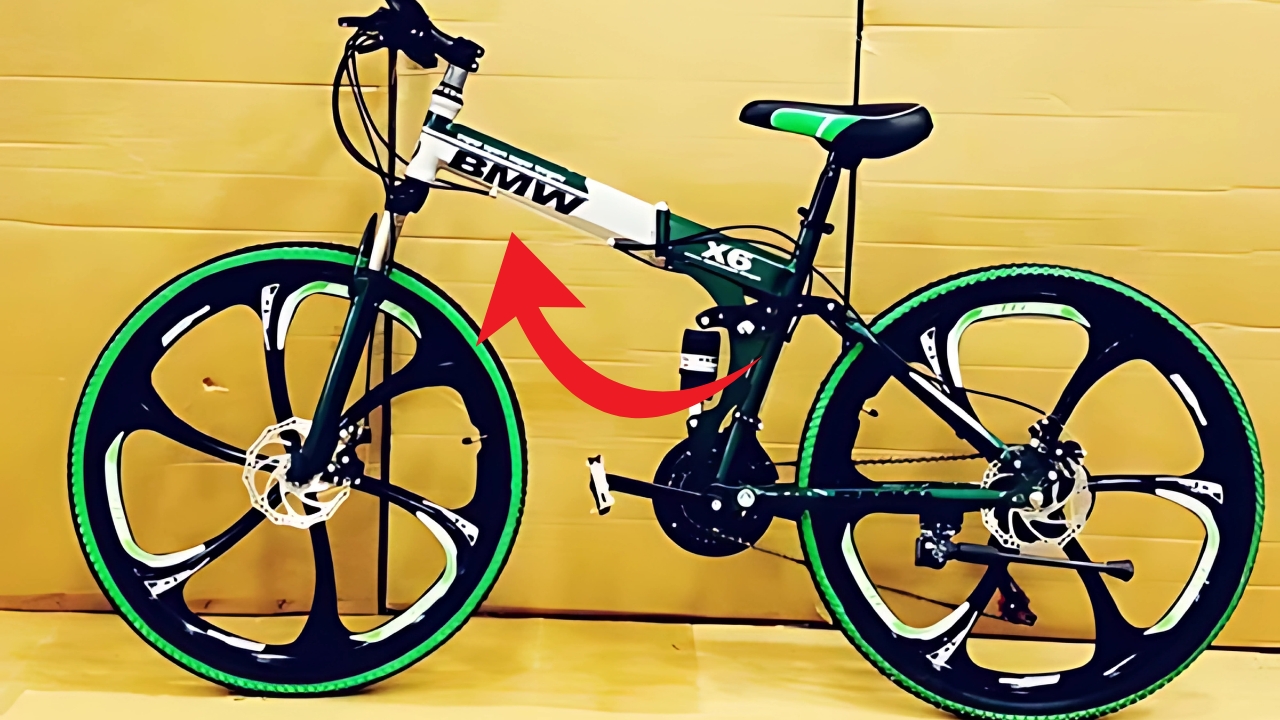
The story of the Skyride BMV X6 begins with the formation of Skyride Automotive, a relatively new entrant in India’s two-wheeler manufacturing landscape.
Founded by a team including former executives from established Indian motorcycle companies and engineers with experience at international OEMs, the company positioned itself deliberately in the premium segment rather than attempting to compete in the fiercely contested mass-market categories dominated by industry giants like Hero, Bajaj, and TVS.
This strategic decision reflected both pragmatic recognition of market realities and deliberate positioning to create distinct brand identity.
By focusing on the expanding premium segment, Skyride avoided direct competition with entrenched players who enjoy insurmountable advantages in production scale and distribution reach.
Simultaneously, the premium positioning allowed the company to establish a brand image built around performance and technology rather than mere utility – creating potential for higher margins and brand prestige if executed effectively.
The X6 emerged as the flagship model in this strategy, developed specifically to demonstrate the company’s technical capabilities and design philosophy.
The model designation itself reflects this aspiration, with the “X” suggesting crossover versatility and the “6” indicating its position at the pinnacle of the planned product range.
The “BMV” prefix, while potentially creating some phonetic similarity to a certain German automotive brand, officially stands for “Bharat Motor Vehicles” – explicitly connecting the product to its Indian origins while hinting at international standards.
Development reportedly began in 2019, with the first production models reaching the market in late 2022 after pandemic-related delays – timing that coincided with the post-COVID surge in premium motorcycle interest as Indian enthusiasts increasingly sought recreation-focused vehicles beyond basic transportation.
This fortuitous timing allowed the X6 to enter the market during a period of category expansion rather than merely fighting for share in a static segment.
Design Philosophy: Distinctive Integration
The X6’s exterior design embodies what might be described as “distinctive integration” – combining elements from various global motorcycle design languages into a cohesive whole that avoids directly copying any single influence.
The overall silhouette follows adventure-sport conventions with its upright riding position, substantial front beak, and moderate windscreen, while incorporating streetfighter elements through the exposed frame sections and compact tail design.
The front end establishes immediate visual identity through vertically stacked LED headlights flanked by distinctive daytime running lights.
This arrangement creates immediate visual recognition while providing excellent illumination – an approach that prioritizes both function and brand distinctiveness.
The fuel tank features pronounced knee recesses and angular extensions that provide both practical rider accommodation and visual muscularity without excessive bulk.
Side profiles reveal careful attention to visual mass management, with the substantial engine and frame components balanced by negative space that prevents the design from appearing heavy despite its actual curb weight of approximately 210kg.
The dual-height seat with its subtle step between rider and passenger areas adds visual interest while providing practical support for different riding scenarios.
Color strategy plays a significant role in the X6’s market positioning, with options including vibrant “Skyride Blue” and “Sunset Orange” alongside more understated “Stealth Black” and “Titanium Silver.”
These choices reflect careful understanding of the target demographic – offering both expressive options for younger buyers seeking visual distinctiveness and more subdued alternatives for mature enthusiasts who prefer sophisticated restraint.
What distinguishes the X6’s design approach from some competitors is its integration of these diverse influences without appearing derivative or disjointed.
Rather than simply mimicking established international designs, the development team has created a cohesive aesthetic that acknowledges various influences while establishing its own visual language – an approach that demonstrates growing confidence in Indian motorcycle design beyond merely following established patterns.
Technical Architecture: Calculated Performance
The X6’s mechanical configuration represents a carefully considered balance between performance credentials and market-appropriate engineering.
At its heart lies a 650cc parallel-twin engine producing approximately 65 horsepower and 62 Nm of torque – specifications that position it competitively in the middleweight segment while acknowledging Indian regulatory and practical realities.
This powerplant embodies sophisticated engineering with its 8-valve DOHC configuration, 270-degree crankshaft for characterful power delivery, and liquid cooling for consistent performance in varied climatic conditions.
The six-speed transmission features precise shift action and well-judged ratios, while the assist-and-slipper clutch reduces lever effort for urban riding while providing a safety margin during aggressive downshifts.
Perhaps most notably, the engine’s character has been specifically tuned for the Indian premium segment’s actual usage patterns rather than pursuing specification-sheet maximalism.
The torque curve prioritizes mid-range strength over peak horsepower, delivering accessible performance in real-world riding scenarios rather than optimizing for numbers that might only be relevant on closed circuits.
This approach demonstrates nuanced understanding of how these motorcycles are actually used by their owners – primarily on public roads with variable conditions rather than in track environments.
The chassis architecture continues this philosophy of calculated performance. The steel trellis frame provides excellent rigidity for precise handling while offering easier manufacturability and repairability than more exotic alternatives – important considerations in the Indian context where service infrastructure varies widely across regions.
The 43mm upside-down front forks and monoshock rear suspension offer appropriate performance for spirited riding while maintaining sufficient compliance for Indian road conditions.
Braking components reflect similar pragmatism, with dual 320mm front discs and four-piston radial calipers providing strong, controllable stopping power without the exotic materials or complex systems that would dramatically increase costs without proportional real-world benefits.
The dual-channel ABS system incorporates sophisticated calibration that prevents wheel lock while allowing experienced riders sufficient control feel – a balance that acknowledges the diverse skill levels within the target market.
Electronics integration demonstrates particular sophistication for an emerging manufacturer. The X6 incorporates a comprehensive suite including multiple riding modes, traction control, and cruise control – features once exclusive to international premium brands that are increasingly expected in this segment.
The implementation shows mature development, with intuitive interfaces and progressive intervention that supports rather than intrudes upon the riding experience.
Riding Experience: Character with Control
Beyond specifications, what distinguishes the X6 most substantially is its cohesive riding character – an elusive quality that transcends individual components to create an integrated experience.
The riding position strikes an effective balance between command and comfort, with a relatively upright stance that provides excellent visibility in traffic while remaining engaged enough for spirited riding on open roads.
The handlebar width and placement offer good leverage for confident control without creating excessive upper body fatigue on longer journeys.
Power delivery exemplifies this balanced approach with linear, predictable response throughout the rev range. Unlike some competitors that exhibit distinct “steps” in their power curves, the X6 provides progressive acceleration that builds confidence through consistency – a characteristic that enhances both safety and enjoyment across varied riding scenarios.
The engine’s sound character has been carefully developed through intake and exhaust tuning to deliver an engaging acoustic experience without excessive volume that might become tiresome on longer rides.
Handling dynamics similarly prioritize accessible confidence over extreme capabilities. The chassis geometry creates stable, predictable responses to rider inputs while maintaining sufficient agility for enjoyable progress on twisting roads.
The suspension tuning acknowledges Indian realities with enough travel and compliance to absorb unexpected surface imperfections without the excessive softness that would compromise control during more enthusiastic riding.
What’s particularly notable is how these elements work together harmoniously rather than feeling like disconnected components. The throttle response complements the chassis capabilities, while the braking performance provides appropriate deceleration without overwhelming the suspension’s ability to maintain composure.
This integration suggests sophisticated development processes more typical of established manufacturers than emerging brands – a significant achievement that speaks to the engineering team’s experience and methodical approach.
Market Reception and Positioning
Since its introduction, the X6 has achieved modest but steadily growing market presence, particularly in metropolitan areas with developed enthusiast communities and service infrastructure.
Initial skepticism regarding a new entrant in the premium segment has gradually given way to cautious acceptance as early adopters report generally positive ownership experiences and the dealer network expands beyond initial limited coverage.
The pricing strategy positions the X6 deliberately below equivalent-specification models from established international brands while offering slight premium over the dominant Royal Enfield products that have traditionally defined India’s middleweight segment.
This middle positioning creates a distinctive value proposition: more sophisticated performance and features than traditional Indian offerings without the price premium associated with imported or multinational brands.
This approach has resonated particularly with a specific demographic profile: educated urban professionals typically in their 30s-40s with sufficient income for discretionary purchases but still value-conscious in their decision-making.
For these buyers, the X6 represents a rational compromise that delivers genuine performance credentials and contemporary features without the status-driven premium associated with some international marques.
The ownership community has developed interesting characteristics, with active social media groups and regular organized rides creating a sense of shared identity among early adopters.
This community-building, actively supported by the manufacturer through sponsored events and rider training programs, has created valuable word-of-mouth advocacy that partially compensates for limited traditional marketing resources compared to established competitors.
Challenges and Evolution
Despite its promising foundation, the X6 faces significant challenges in establishing long-term viability in a highly competitive segment.
Service network development remains an ongoing concern, with coverage still limited primarily to major urban centers – a significant limitation for a motorcycle with touring capabilities that might reasonably be expected to venture beyond these areas.
The company has prioritized service quality over rapid expansion, establishing comprehensive training programs for technicians rather than simply adding locations without adequate support – a strategy that may yield long-term benefits but creates short-term limitations.
Parts availability similarly presents ongoing challenges, with some owners reporting longer-than-ideal wait times for certain components.
The company has addressed this through a centralized inventory system and overnight shipping capabilities, though this remains an area where established brands with decades of supply chain development maintain significant advantages.
Product evolution shows encouraging signs of manufacturer responsiveness to market feedback. A mid-cycle update introduced in early 2024 addressed several owner-reported issues, including revised switchgear with improved tactile quality, updated ECU mapping for better low-speed fueling, and enhanced wind protection through a slightly taller windscreen.
These targeted improvements suggest both active listening to customer feedback and the engineering capability to implement meaningful changes within the constraints of production economics – positive indicators for long-term product development capacity.
Skyride BMV X6: Looking Forward: Potential and Path
The X6 represents more than just another entry in India’s expanding premium motorcycle segment – it embodies the increasing sophistication of indigenous development in a category once dominated exclusively by international designs.
Its balanced approach to performance, technology integration, and market-appropriate engineering demonstrates growing confidence and capability within India’s motorcycle industry beyond the mass-market segments where it has traditionally excelled.
For Skyride Automotive itself, the X6 establishes a foundation for potential expansion both domestically and potentially internationally, particularly in similarly developing markets where its combination of performance and value might find receptive audiences.
The modular nature of its platform architecture suggests possibilities for derivative models addressing different segments, from more touring-oriented variants to more urban-focused interpretations.
The company’s approach to technology integration – implementing sophisticated features with market-appropriate calibration rather than simply chasing specification maximalism – suggests a maturity that bodes well for navigating the industry’s ongoing transitions around electrification, connectivity, and evolving safety expectations.
Early experiments with a hybrid assistance system reportedly undergoing testing indicate willingness to explore progressive technologies while maintaining the pragmatism that has defined the X6’s development.
What remains to be seen is whether Skyride can establish sufficient scale and brand recognition to compete sustainably in a segment increasingly contested by both established premium players and other emerging manufacturers with similar aspirations.
The X6’s thoughtful execution provides a promising foundation, but transitioning from interesting newcomer to established presence requires consistent execution across product development, manufacturing quality, and service support – a challenging trilogy that has humbled many ambitious entrants in India’s complex and demanding motorcycle market.
If Skyride can navigate these challenges successfully, the X6 may eventually be remembered not merely as an interesting product in its own right but as an important milestone in the evolution of India’s motorcycle industry – from skilled adopter of international designs to confident creator of distinctive machines that reflect both global standards and specifically Indian insights about how performance motorcycles can be optimally developed for the world’s largest and most diverse two-wheeler market.
